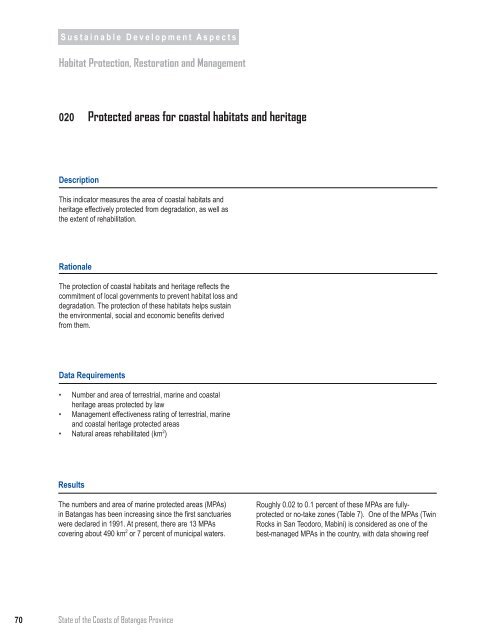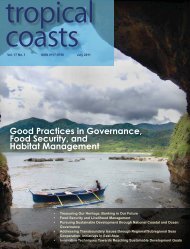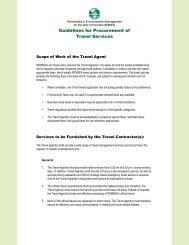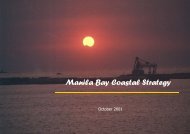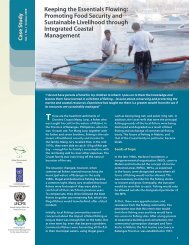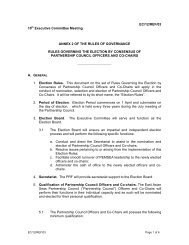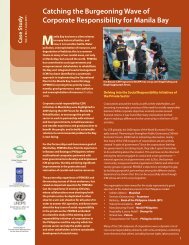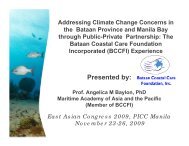Download PDF Copy - Pemsea
Download PDF Copy - Pemsea
Download PDF Copy - Pemsea
You also want an ePaper? Increase the reach of your titles
YUMPU automatically turns print PDFs into web optimized ePapers that Google loves.
S u s t a i n a b l e D e v e l o p m e n t A s p e c t s<br />
Habitat Protection, Restoration and Management<br />
020 Protected areas for coastal habitats and heritage<br />
Description<br />
This indicator measures the area of coastal habitats and<br />
heritage effectively protected from degradation, as well as<br />
the extent of rehabilitation.<br />
Rationale<br />
The protection of coastal habitats and heritage reflects the<br />
commitment of local governments to prevent habitat loss and<br />
degradation. The protection of these habitats helps sustain<br />
the environmental, social and economic benefits derived<br />
from them.<br />
Data Requirements<br />
• Number and area of terrestrial, marine and coastal<br />
heritage areas protected by law<br />
• Management effectiveness rating of terrestrial, marine<br />
and coastal heritage protected areas<br />
• Natural areas rehabilitated (km 2 )<br />
Results<br />
The numbers and area of marine protected areas (MPAs)<br />
in Batangas has been increasing since the first sanctuaries<br />
were declared in 1991. At present, there are 13 MPAs<br />
covering about 490 km 2 or 7 percent of municipal waters.<br />
Roughly 0.02 to 0.1 percent of these MPAs are fullyprotected<br />
or no-take zones (Table 7). One of the MPAs (Twin<br />
Rocks in San Teodoro, Mabini) is considered as one of the<br />
best-managed MPAs in the country, with data showing reef<br />
70 State of the Coasts of Batangas Province


